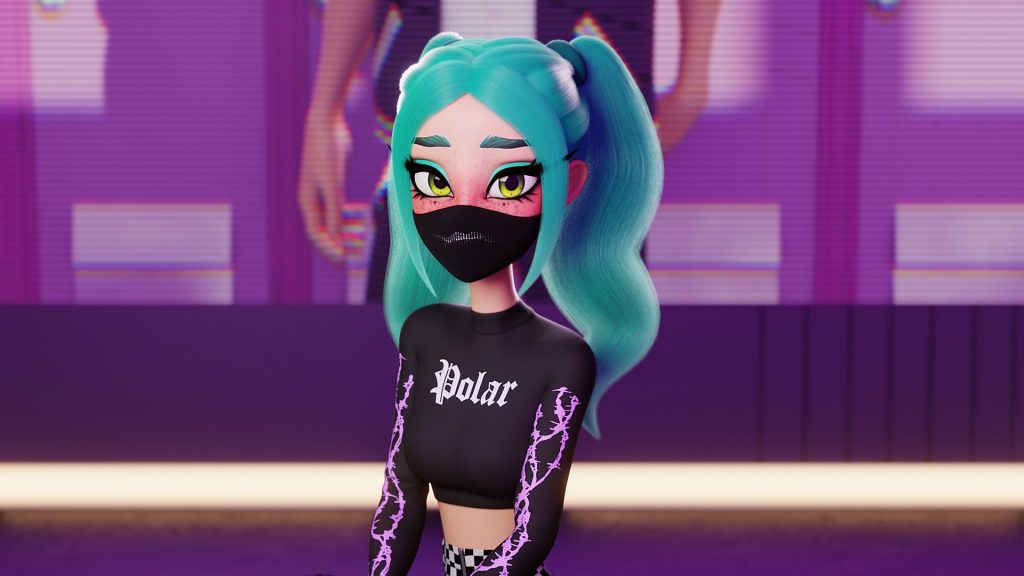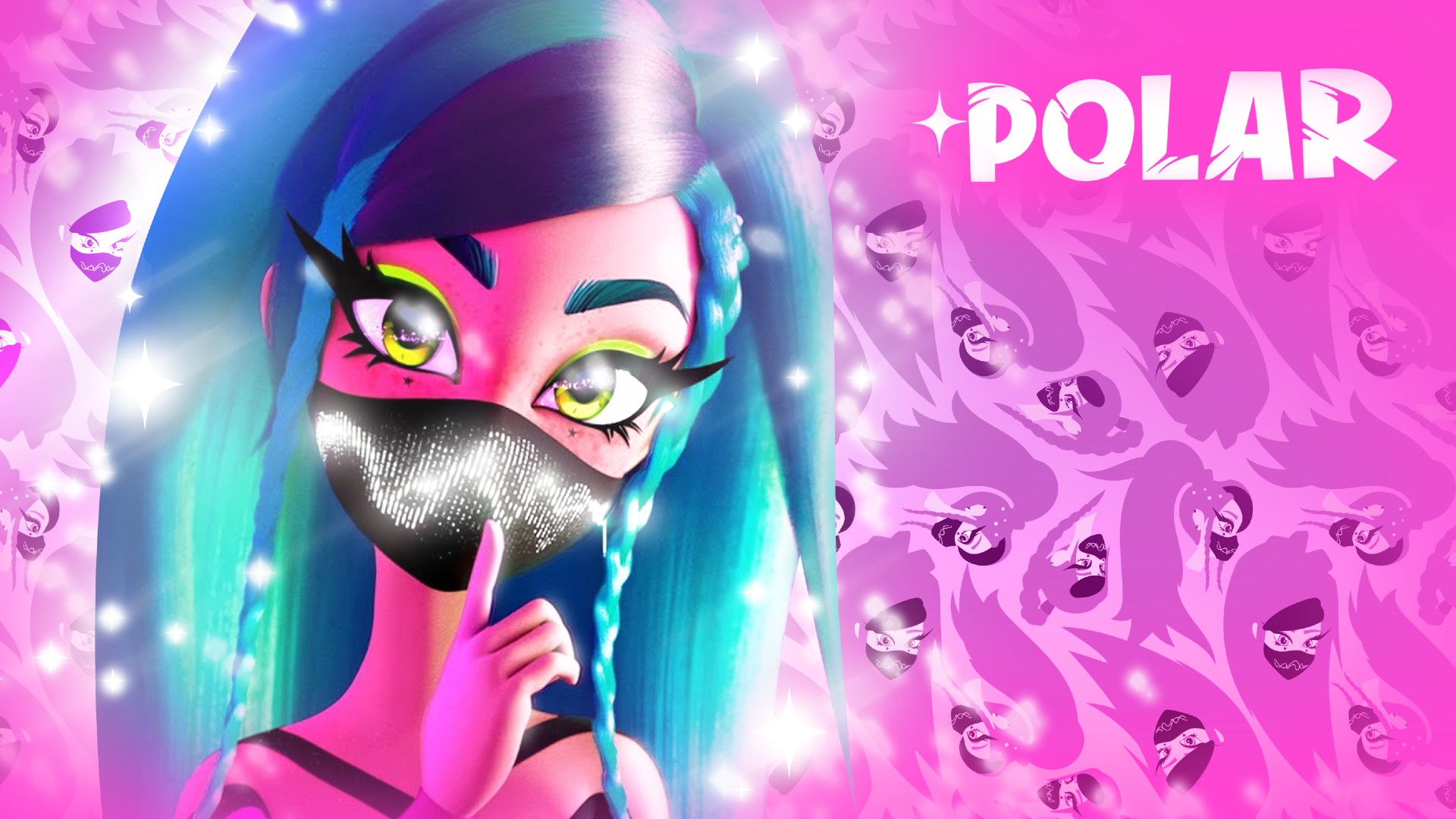Patrik Wilkens, Vice President of Operations at TheSoul Publishing explains why virtual influencers are the future of marketing and, perhaps without realising it, that you and those around you are already taking notice of what they have to say.
Over half of you already follow at least one virtual influencer.
It’s true. These virtual influencers are already here. And you’re likely already part of the trend, according to Influencer Marketing Factory’s 2022 Virtual Influencers Survey.
Although digital avatars in the music industry have been around for a while, such as Gorillaz in 1998 and Dethklok in 2006, virtual influencers have been significantly on the rise since 2016, reaching the same – if not higher – levels of success as their real-life counterparts. But what’s the reason behind this?
At TheSoul Publishing, we launched our own virtual influencer, Polar, in 2021. This article will examine the reasons behind her massive success and shed some light on why this new type of influencer is here to stay.

What is a Virtual Influencer?
Virtual influencers, or CGI influencers as they are often known, are fictitious computer-generated ‘people’ with genuine human qualities, features, and dispositions to appear human-like to help fans relate to them and build a sense of trust.
But, of course, virtual influencers do not ‘exist’ in the conventional sense, as behind each of them are anonymous creators, namely organizations like TheSoul Publishing and Brud. These organizations are responsible for expanding their virtual influencer’s social media presence and transforming these virtual personas into internationally recognized figures.
The general consensus is that these influencers are a “substitute” for real influencers and are only utilized by businesses for social media marketing. However, a new era of virtual influencers is emerging in which they are creative forces in their own right and serve as much more than mere “substitutes.”
Who is Polar — the Metaverse Popstar?
‘We already live in a reality where it doesn’t matter if you are a human or a virtual person.’

These are some of the famous first words of who Pocket Gamer is already calling a ‘global icon’: Polar. She’s the Metaverse-born singer, dancer, and all-around creator whose two million followers are spread across all major platforms, most notably Spotify, YouTube, TikTok, and Instagram.
Polar rose to fame in September 2021 with the release of her first single, Close to You, on YouTube, which has now generated over eight million views.
By being a key figure in bringing together the virtual world with the physical world, along with mixing the worlds of gaming and music, Polar is leading the way as an influencer. She’s creating a unique type of digital fandom powered by the metaverse, where innovation is happening every day.
Why Virtual Influencers Have an Edge over Real-Life Influencers
While there are many reasons behind virtual influencers’ rapid rise in success, there are five keys that place them at a distinct advantage over real-life influencers:
1. There’s Now a Real-Life Influencer on Every Corner
In our social-media-driven world, consumers have started to become jaded with the overwhelming number of platforms filled with influencers across every niche imaginable. Every second, a new purported ‘influencer’ appears, and this will only accelerate, with Influencer Marketing Hub estimating the creator economy to be worth trillions of dollars in the future.
However, as the term becomes more loosely applied, the perceived authority behind it fades.
At TheSoul, when we decided to launch our in-house music label, TheSoul Music, we recognized this oversaturation as a key challenge. After assessing our strengths and the growing Web 3.0 market, we became certain that creating a virtual popstar was the best way to reignite that spark of interest, engagement, and connection that initial real-life influencers first created.
To do this, we knew we had to embrace Web 3.0 and the metaverse. We planned for Polar’s first single, Close to You, to make its debut at a three-day virtual launch party in the popular 3D metaverse for mobile gaming, Avakin Life, back in October 2021. This enabled users to listen to her brand-new song in the real world via song releases on platforms such as YouTube and TikTok, as well as through their own digital avatars in-game.
2. Consumers Have Grown Wise to Influencer Advertising
Whether an influencer is physical or digital, making an emotional impression on fans is the key to success. Brud, the company behind the virtual influencer Lil Miquela, agrees, with their representative stating, “Digital pop stars are opening new doors for musicians to connect with fans and fans to connect with the music.”
However, with the oversaturated influencer market comes a loss of human connection between influencers and their fans. Consumers have become more aware of advertising hidden in posts and overt tactics to drive sales.
We knew this when Polar launched, which is why we wanted to deliver a unique, unforgettable musical experience for her millions of followers that connected to them in ways beyond typical influencer marketing. We aimed to create a relationship between fans and Polar in the same way a pop star would at a real-life event. As Polar explained in an interview with Reuters, her “fans are also [her] friends, and they really understand [her].”
Having these possibilities further demonstrates the limitless potential for virtual influencers to continuously create memorable moments “and be with [their] fans on the same side of the screen.” That’s just like a real-life pop star, except inside the screen, not outside it!
3. Virtual Influencers are Built, Not Born
It seems obvious to say, but it’s worth expressing: virtual influencers are not human.
This means that there are teams, departments, and strategies behind every virtual influencer. Each move and every post they make is carefully considered from multiple viewpoints. As a result, virtual influencers are less likely to make a misstep when it comes to talking about certain topics or engaging in certain activities.
On the other hand, real-life influencers are human and often do not have a whole team weighing each decision. No matter how hard such influencers try to avoid controversy, posts made without strategic considerations in mind can lead to ramifications down the line.
4. Virtual Influencers Can Be Anywhere and Everywhere
No matter how hard a real-life influencer tries, they have limited time and resources to connect with fans and build their personal brand.
For virtual influencers, time and resources are much more flexible, as there can be entire teams dedicated to their creation and maintenance. Plus, as a result of her digital nature, influencers like Polar can be made to appear in multiple places at once, giving fans at different touchpoints the opportunity to meet her or see her perform.
For example, to build upon Polar’s initial Close to You success, we arranged for her to headline the Solar Sounds Festival, providing an extraordinarily unique musical experience to over four million people. Polar could have easily been present on several metaverse platforms simultaneously, giving an interview or posting new content on her social channels.
In addition, Polar is now experimenting with live performances via hologram. Fans responded well when she took to the stage at her first ever performance at a venue in Riga early this year. Polar plans to perform in front of bigger crowds in bigger, real world venues in the coming months with hologram technology becoming more accessible by the day.
5. Web 3.0 Gaming is Growing and Will Lift Up Virtual Influencers With Them
Despite the current Crypto Winter, developers are hard at work creating the new era of gaming. No matter if it’s referred to as Play-to-Earn Gaming, Metaverse Gaming, or Web 3.0 Gaming, another technological revolution is happening under our noses.
When Polar headlined the Solar Sounds Festival in the mobile gaming metaverse, Avakin Life, users had the opportunity to purchase various items of Polar’s clothing, including her signature facemask, for their in-game avatars, otherwise known as Avakins.
In addition, they could also change their Avakins’ eyes and hairstyles to resemble Polar and access three dance routines that allowed the Avakins to imitate her choreography too.
All these customizable aspects bring individuals closer to influencers, and this is only the beginning.
As digital ownership and NFTs continue to grow in popularity in worlds such as The Sandbox, Decentraland, and Avakin Life, the opportunities for easily implementable virtual influencer collaboration will expand in tandem. This is part of the reason why so many high-profile musicians are creating virtual representations of themselves, including Ariana Grande in Fortnite, Grimes as War Nymph, and ABBA in their hologram concerts.

Conclusion
Polar has demonstrated to the world what virtual artists are capable of, and TheSoul Publishing is eager to present Polar with even more opportunities to elevate her cutting-edge fan experiences to entirely new heights.
Overall, the world of Web 3.0 and the metaverse is expected to grow and expand, and if the numbers from the consistently lucrative gaming business are any indication, it is a worthwhile sector for artists and influencers to embrace as they look to the future.
Daniel Griffiths is a veteran journalist who has worked on some of the world's biggest entertainment, home and tech media brands. He's reviewed all the greats, interviewed countless big names, and reported on thousands of releases in the fields of video games, music, movies, tech, gadgets, home improvement, self build, interiors, garden design and more. He’s the ex-Editor of PSM3, GamesMaster, Future Music and ex-Group Editor-in-Chief of Electronic Musician, Guitarist, Guitar World, Computer Music and more. He renovates property and writes fun things for great websites.



































